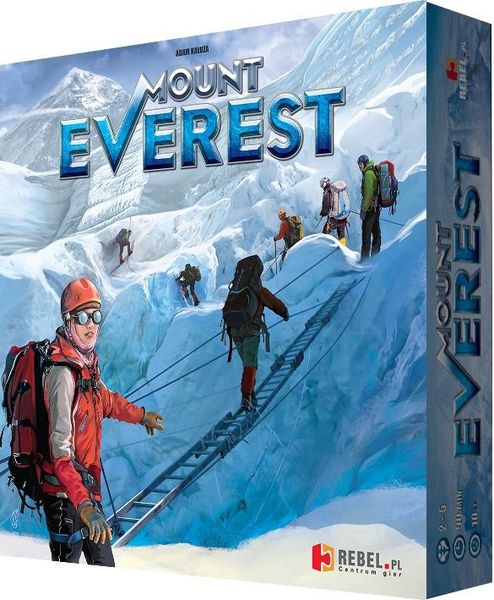Mount Everest (2013) Board Game
Mount Everest Board Game, released in 2013, is a strategic board game designed by Bartek Fedyczak and Jarek Nocoń. The game is set in the world of mountaineering and challenges players to navigate the treacherous terrain of Mount Everest.
Game Components of Mount Everest
How To Setup Mount Everest
To set up the game, each player starts by selecting two immortal guides. Each player receives an identical deck of cards representing movement points. The game board is set up with the mountain terrain, and the risk tokens, weather tokens, and other components are placed according to the rules. Players decide how to distribute their guides’ loads, choosing between carrying oxygen tanks, tents, amateur climbers, or rich tourists.
Gameplay Mechanics and Game Objective
Mechanics:
Game Objective:
The objective is to guide tourists and amateur climbers to the top of Mount Everest and back down to base camp, maximizing victory points while avoiding penalties for climber deaths.
Player Experience
Playing Mount Everest can be a complex and sometimes frustrating experience. The game demands careful planning and resource management, as players need to balance the risks of climbing quickly against the need to keep their climbers alive. The random elements of card draws and weather can make the game feel unpredictable and sometimes unfair, especially when bad luck leads to climber deaths and severe penalties.
Pros
Cons
Personal Thoughts on Mount Everest
Mount Everest is a game best suited for experienced board game enthusiasts who enjoy complex strategy and resource management. It is not ideal for casual players due to its steep learning curve and the potential for frustration from luck-based outcomes. However, for those who appreciate a challenging and thematic game, Mount Everest offers a unique and engaging experience that simulates the high-stakes adventure of climbing the world’s highest mountain.
We are supported by our audience. When you purchase through links on our site, we may earn an affiliate commission, at no extra cost for you. Learn more.

